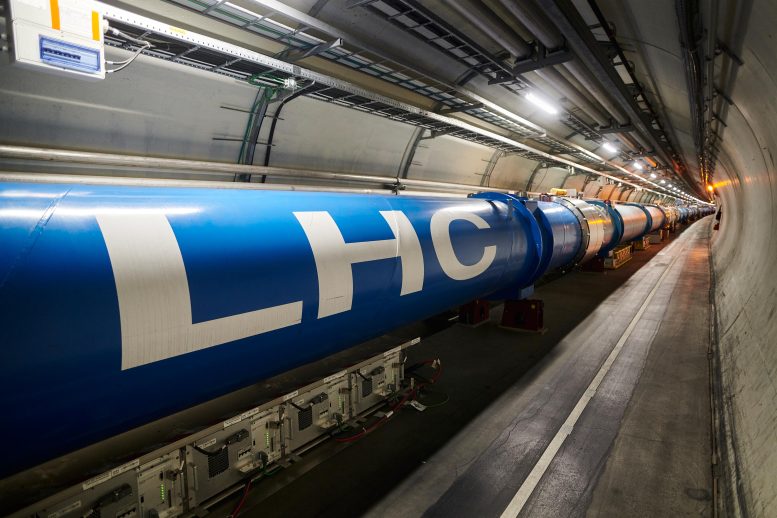
The Large Hadron Collider, the world’s largest and most powerful particle accelerator, restarted on April 22, 2022, after more than three years of maintenance, integration and modernization.
Beams of protons orbit again around the collider’s 27-kilometre ring, marking the end of a multi-year gap of upgrade work.
in 2022, CERN The LHC is restarting after more than three years of maintenance and updates known as Long Shutdown 2 (LS2). Once restarted, power will rise to world records as CERN begins operating the LHC Run 3 for physics research. Then July 4th will mark the anniversary of #Higgs10, the 10th anniversary of the discovery of the Higgs boson.
The Large Hadron Collider (LHC), the world’s largest and most powerful particle accelerator, has restarted after a break of more than three years for maintenance, integration and modernization work. Today, April 22, 2022, at 12:16 CET, two proton beams are circulating in opposite directions around the 27-kilometre (16.8-mile) ring of the Large Hadron Collider at an injection energy of 450 billion electronvolts (450 gigaelectronvolts). ).
These beams rotate at the injection energy and contain a relatively small number of protons. “The high-intensity and energy-intensive collisions are two months away,” says CERN’s Chief of Radiology, Rodry Jones. “But the first packets represent the successful restart of the accelerator after all the hard work of a long shutdown.”
“Machinery and facilities underwent significant upgrades during the second extended shutdown of the CERN accelerator complex,” says Mike Lamont, director of accelerators and technology at CERN. “The LHC itself has undergone an extensive fusion program and will now operate at a higher power and, thanks to major improvements in the injector complex, will provide significantly more data for the upgraded LHC experiments.”
Experimental beams circulated at the LHC for a brief period in October 2021. However, the beams circulating today not only mark the end of the second long shutdown of the Large Hadron Collider but also the beginning of preparations for four years of physical data-taking, which is expected to begin this summer. .
Until then, LHC experts will be working around the clock to gradually restart the machine and safely increase the energy and density of the beams before delivering the collisions to the experiments with a record energy of 13.6 trillion electronvolts (13.6 electronvolts).
This third run from the LHC, called Run 3, will see machine experiments collect data from collisions with not just record energy but unparalleled numbers as well. Both the ATLAS and CMS experiments can expect to receive more collisions during running physics than in the two previous physics runs together, while the LHCb, which has undergone a complete regeneration during shutdown, can hope to triple its number of collisions. Meanwhile, ALICE, a detector dedicated to studying heavy ion collisions, can expect a fifty-fold increase in the total number of ion collisions recorded, thanks to the recent completion of a major upgrade.
The unprecedented number of collisions will allow international teams of physicists at CERN and around the world to study the Higgs boson in great detail and put the Standard Model of particle physics and its various extensions to the most stringent tests yet.
Other things to look forward to in Play 3 include the launch of two new experiences, Faster And [email protected], designed to search for physics beyond the Standard Model; Special collisions of proton and helium standard How many isotopes of protons are produced from antimatter in these collisions; And collisions involving oxygen ions that would improve physicists’ knowledge cosmic ray physics and the Quark-gluon plasmaa state of matter that existed shortly after the great explosion.

“Beer aficionado. Gamer. Alcohol fanatic. Evil food trailblazer. Avid bacon maven.”

